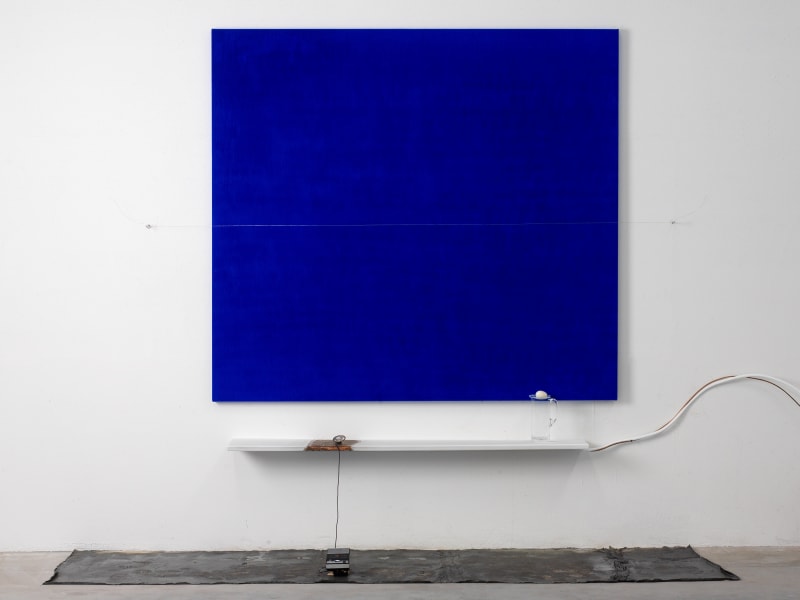BY DIMITRIS LEMPESIS
“Painting as a Butterfly” is the first major retrospective dedicated to the pictorial and drawing research of Pier Paolo Calzolari (Bologna, 1943), one of the most important contemporary Italian artists, exponent since the ’60s of the research related to Arte Povera. The exhibition includes over 70 paintings, drawings and multimedia works created from the mid-’60s to the present. The practice of painting for Calzolari is a “listening instrument” a state of “suspension” (whose metaphor is the butterfly of the exhibition title) capable of leading to the synthesis the multiple articulations of his artistic research, which is at the same time minimalist and sensual, conceptual and Baroque. The exhibition unfolds across several galleries on several different levels of the Madre Museum, yet it still has a strange feeling of being a crowded exhibition, this despite there being a lot of empty space in the rooms and between the works. But this is not a bad thing. It is the personality of the paintings and objects that occupies so much space. Take for example “Senza titolo” (2014-15) an installation of nine painted panels hanging from the wall in a customized room. The panels extrude off the wall in a curved formation; seven are red, one is yellow and one is white; each contains a portion of a composition, an exploding cosmos of lines and forms. The work is mesmerizing and off-putting at the same time. The exhibition method is so unusual it comes to the forefront as content, yet the material presence of the panels simultaneously competes for attention. The painted composition on the panels, meanwhile, is sublimely beautiful. The relationship between these elements and the viewer is contentious, making the work seem almost like a wild beast confined in too small a cage. Similarly, the massive “Monocromo blu” (1979) hangs on a giant wall in a giant room, and yet is hung so high that one is forced to crane the neck upwards to see the work. The only way to experience the painting in comfort is from afar, viewing it not as a stand-alone artwork but more as a relational aesthetic element of the architecture. Elsewhere throughout the exhibition the works continually compete with each other and themselves for breathing room. Occasionally, a painting hangs alone in a soft spotlight, acting as an oasis of sorts—a chance to just look a painting without feeling confronted. This is part of what Calzolari is so good at. He is a bridge between mid-century conceptual art and contemporary relational art; an artist who has managed somehow to introduce the bemusing and confrontational spirit of a happening into the calm, meditative body of a curated exhibition. Although the exhibition engages with every aspect of the complex oeuvre Calzolari has created, the most prescient works in the show are his multi-media—or as the curator calls them, “multi-material” works. Many of them feature sculptural tableaus with motors or pumps situated on the floor in front of a painting that hangs on the wall. Staring at one of these uncanny assemblages, it is easy to feel caught between the sense that something happened, something is happening, or something is about to happen. The fact that actions have occurred, or have been been set in motion, is undeniable, yet one can almost not imagine why. The kinetic quality of the work implies some meaning, or some purpose—a what that suggests a why. But that might also just be part of the humor of the work—an additional layer of abstraction that prevents the eyes and mind of a viewer from simply experiencing the aesthetic phenomenon for what it concretely is.


